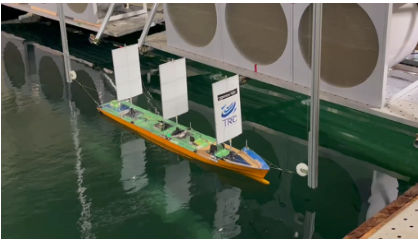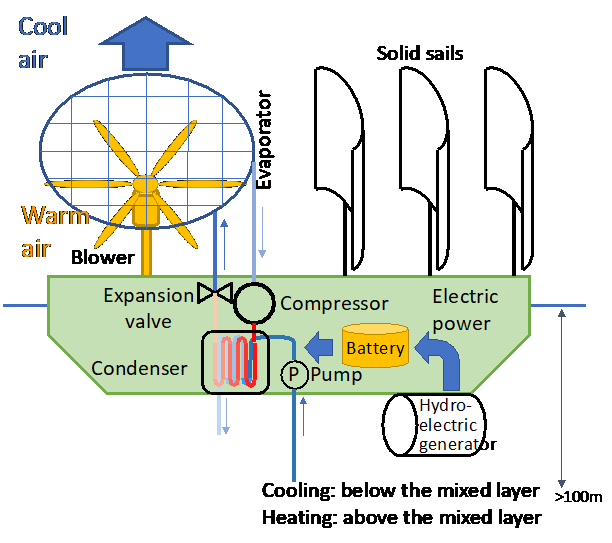Progress Report
Typhoon Control Research Aiming for a Safe and Prosperous Society[2] Engineering Approach
Progress until FY2024
1. Outline of the project
Effective typhoon intervention methods utilizing meteorological models have been studied by the meteorological approach team. However, to evaluate the practical feasibility of the proposed intervention methods, concurrent studies on specific intervention devices are required. Furthermore, while the impact assessment team estimates the amount of damage that could be reduced through typhoon control, it is also necessary to assess the costs and practical feasibility of implementing these methods to determine whether control actions should be undertaken. The engineering approach team conducts research to address these challenges.
2. Outcome so far
Currently, the large-scale deployment of ships equipped with large rigid sails is being investigated as a candidate method for typhoon intervention. To assess the feasibility of this approach, experimental tests were conducted in the large towing tank at Yokohama National University. A scaled model of a large sailing vessel designed for typhoon intervention was tested under conditions that replicated the typhoon environment as closely as possible with the existing facilities (Figure 1). The experimental results demonstrated that the addition of a large-scale power generation turbine mounted near the hull bottom could enhance the vessel’s seakeeping performance, enabling relatively stable operations under severe sea states while simultaneously allowing for power generation. Moreover, a simulation tool was developed to evaluate the extent to which the sailing vessels could effectively intervene in typhoons based on historical typhoon track data. Utilizing this simulator, a case study was conducted to explore the optimal specifications of a power generation ship aimed at maximizing electricity production during typhoon intervention operations. Through this analysis, design guidelines for the specific power generation equipment to be installed were derived.

As part of an advanced exploration into typhoon intervention technologies, a control methodology has been proposed wherein wind volume and temperature are manipulated via spatially distributed wind turbines to more efficiently influence both the intensity and trajectory of typhoons. In collaboration with the meteorological approach team, investigations have been carried out to determine the required turbine capacities, quantity, installation locations, and cooling capabilities. Additionally, research has been undertaken to identify the essential state variables necessary for turbine control in response to evolving typhoon conditions and to develop estimation methods for these variables. Figure 2 presents a conceptual configuration of a heat pump ship-based power generation unit envisioned as a typhoon intervention instrument. Heat pump cycle simulations were performed to estimate the energy requirements corresponding to specified cooling and heating demands.
In parallel, the potential of employing surfactants to suppress sea surface evaporation as a means of weakening typhoons was also examined. A pseudo-ocean environment was constructed within a laboratory setting (Figure 3), and the evaporation suppression performance of various surfactants was evaluated under different environmental conditions, including variations in water quality, temperature, and wind speed. The behaviors of the surfactants under these conditions were quantitatively characterized. Nevertheless, in light of potential environmental concerns, it is also suggested that the use of surfactants should be refrained from unless a significant breakthrough in typhoon control is realized.
Furthermore, preliminary evaluations were conducted regarding the use of windbreak nets to enhance surface friction and the method of seawater spraying within typhoons. For these approaches, assessments of the required technological maturity and estimates of the associated implementation costs were performed, assuming practical deployment scenarios.


3. Future plans
In parallel with ongoing studies aimed at realizing the intervention methods examined thus far, investigations into various other intervention approaches proposed through meteorological approaches will also be pursued. In particular, in fiscal year 2025, new research activities are scheduled to commence on the utilization of aerial vehicles such as aircraft and drones for typhoon intervention.